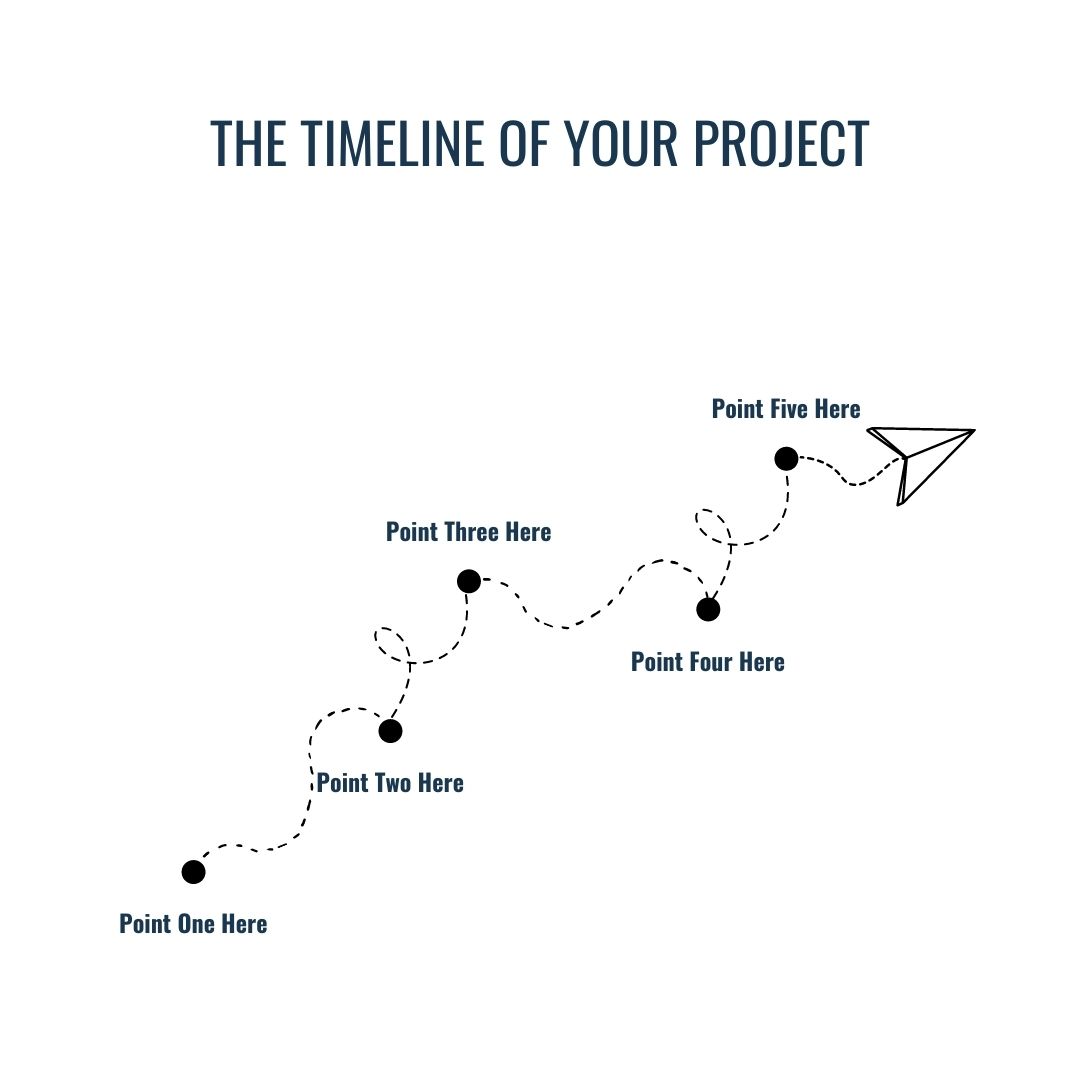Productive Projects and Teams – doing great work

What is a productive project?
A productive project generates results, provides a good team atmosphere, has distributed tasks, has involved team members who support each other and work on a common goal. A productive project also provides the desired and finished project result. And a productive project is one that your team members know is completed and they are satisfied and proud of. A productive project can and should also be marketable. In the end, people in your organization should know about improvements that have happened or systems that have been implemented. A productive project ensures that people get trained in the skills they need to have to use new systems. Organizations often waste potential for increased productivity as employees simply don’t know about something. Whether that is a shortcut, like an SAP transaction that automatically provides the insights instead of manually creating an Excel list out of several files. Productive projects use the skills and strengths of people, particularly team members. It’s not a fairy-tale vision but actual and possible to handle in real life.
How to facilitate a productive and fun meeting?
In the case of storytelling
Do you know what’s fun and productive? Stories. We human beings love stories. We also tell stories to children all the time. Stories are a way to make people remember us. Stories are also the perfect way to begin a presentation. People will remember a story and link it to you, to your personality, and remember it when seeing your face. That’s also called personal branding, but more on productivity and personal branding another time. Stories make people “come alive” – and will also wake you up. I mean who wants to go into a meeting with a snore. Telling a story may be exactly the unexpected thing that your fellow peers or your boss don’t expect.
A way to facilitate fun and have a productive meeting is to enter with a story about what you encountered or what happened to you recently. Your story can vary in length. The story does not have to be lengthy.
How to tell that a story? Make it vivid. Tell what you heard, saw, felt, experienced. No need to make an emotional striptease or overshare. You should feel comfortable with what you’re sharing. It’s okay to feel nervous to open up or share something. Just know the difference between basic nervousness and something that has no place to discuss in a meeting. We’re in business – it’s serious, right? Just kidding. I strongly recommend infusing something personal when you show up to meet people. This way your fellow employees can get to know you on a whole different level which builds trust and can create a personal connection.
So what could you share? Remember the time when your 3-year old locked you, your wife, your other 2 kids out of the house and it was the day of New Year’s Eve? Hence, all companies to unlock doors being closed due to the public holiday, plus, you’re living in the countryside and it’s freezing because it’s January. Following how you got out of that “misery”. Yes, that story. Even stories of mishaps can be fun as long as they are told from a position that considers the learnings from it and with a grain of salt and infused with some humor.
What to do when you’re not really the fun person?
That’s fine. You still want to warm up the meeting phase with something casual or a story. Easing into the situation and building rapport with your peers can make you speed up and move through the agenda of the meeting in a more efficient and productive way.
What to do when you’re meeting someone who hates small talk and likes to get straight to the point?
Yes, some people like to get straight to the point. They hate it when somebody wastes their time. In this case, you can just recall a past, pleasant experience that triggers a memory. Like “Remember when we were on our way to X and X happened?” Make sure the story is somehow relevant and serves the purpose of the meeting. All things are usually somehow connected. Don’t overcomplicate things. Just say something.

How to be a productive project manager?
When time is pressing, priorities pile up, different stakeholders need an answer – make sure you start right next time.
Sometimes projects get assigned to you. You can’t always choose what you want to work on. New tasks or projects just “fall in your lap”. And maybe this project is not in an area you enjoy working on. Maybe you’re not the “IT security” project guy and still, it is expected from you to create a productive outcome. Maybe you feel that this project is below your skills. Maybe you feel that this project is above your skills and will stretch you out of your comfort zone and your current skills.
Regardless of the situation, it’s up to you and your attitude to make out of it what you make out of it.
The attitude to lead productive projects
“It’s okay, as long as they pay me.” Is it? For some people maybe. Receiving a salary from a company or getting paid in general is a beautiful thing. So why is the salary, even when it’s a stellar salary, not enough to have productive projects with meaningful outcomes? Countless surveys are confirming that the salary is not enough of an external motivation factor. Intrinsic motivation plays a big role.
The attitude matters and impacts your productivity. When people dread working on a task it can easily take them 3 times longer. They put off work, they are bored doing the tasks, they are not in the flow, they make mistakes because they are unattentive. Isn’t it a pity to waste your time and your company’s time?
At the same time, I had a client who told me they got a project assigned and to be completed within two months. It took her 3 weeks to finish it and do a stellar job. How did she do that? Because that’s the habit and professionalism she applies. Because it’s in her nature to want to do a great job for herself. Not necessarily because the work got assigned to her, not necessarily because her boss told her so. She was also not able to achieve this result because she outsourced all her tasks to someone else.
But she gracefully coordinated, did the work herself, included people, and built the relevant connections in the company to move ahead more quickly.
When you’re in the place of assigning tasks to people think and also ask them whether this is something they actually would like to work on or learn more about. Let’s be honest – employees who are unsatisfied with their work leave the position anyway. Either voluntarily or get fired anyway because other people notice they are not doing the work the way they are supposed to.
It’s really in everyone’s best interest (and health) to maintain a nurturing and productive work environment that not only keeps someone busy but also kills time. certificate is not yet amortized by the company. I need to stay another 3 years.” Or they say “It’s good, it’s paid by the company.” Dude, seriously? Is your ambition that dead and your willingness to improve your life or skills of so little importance to you that you’re not willing to invest in yourself? I seriously doubt that. Also, investing in yourself is more than buying a new lipstick, nail polish, or new shoes. So infuse some common sense and meaning in your projects and make your life and work productively enjoyable again beyond the superficial stuff!

What to do when you can’t choose the project yourself?
Make the conscious choice to give meaning to what you’re supposed to be working on.
What if you can’t find meaning in this project, work, industry, or company?
Option 1:
You’re free to move on. You’re not forced to stay. You’re not a tree – you can move. It’s up to you to look for a different position, different job and choose something enjoyable. Sometimes it’s enough to apply for some positions, ask around. You don’t have to quit and drop everything immediately.
Option 2:
Another suggestion is to ask a coach. I said it “a coach” – like the dirty work. Or ask a mentor. I don’t know if this sounds any better to you. I mean literally, any person who is further ahead than you in your field and whose opinion you appreciate. This does not mean that this person can coach or mentor you but they will probably be able to offer some external insights. If you want more, like guided recommendations while you’re working on your goals, refer to a coach and see how you can gain meaning in your work. Set goals, challenges, areas of improvement for yourself with a coach to make work fun for you again.
You may be thinking:
I hear employees say over and over “I’m not doing a course unless it’s paid by the company.” Or they say something like this “I’m not changing job because this certificate is not yet amortized by the company. I need to stay another 3 years.” Or they say “It’s good, it’s paid by the company.” Dude, seriously? Is your ambition that dead and your willingness to improve your life or skills of so little importance to you that you’re not willing to invest in yourself? I seriously doubt that. Also, investing in yourself is more than buying a new lipstick, nail polish, or new shoes. So infuse some common sense and meaning in your projects and make your life and work productively enjoyable again beyond the superficial stuff!
The productive project timeline
You may wonder:
What’s the aim of this project?
Who again has an interest in the project?
If you’ve ever asked yourself between a project why you need to be working on this project again and what’s the overall benefit, then you have forgotten your starting point.
How to get back on track:

The starting point and the desired end state of a project
It matters that you know where you’re starting from. Knowing the current state and the end state is crucial to staying on a productive track in the project. You should know who has an interest in your project? You should know who has not an interest in your project and might hinder you or your team members from doing a productive job. Having a clearly defined project scope allows you to go in the right direction.
Know your timeline, your milestones, tasks, subtasks, tasks that need to be done by a certain time otherwise there will be a delay. Regardless, expect temporary delays. I don’t want to sound pessimistic here but realistic. I see it all the time that unknown aspects come up in the process and create room for discussion causing hold-ups.
Productive decision-making in projects
You can avoid bottlenecks, hold-ups by assigning a decision the appropriate meaning. A decision is just a decision. Avoid lengthy discussions that easily become circular and don’t lead to any outcome. Make one decision and decide to move ahead. This will give new insights. There is always way too much time and mental capacity wasted through discussions and information research that don’t lead anywhere. On the contrary, they are often counter-productive to moving ahead. Yes, if it’s a project about analyzing the different software that passes on personal details and will violate GDPR it’s a good idea to be thorough. In general, don’t overcomplicate it. There are meetings that, week after week, discuss the fact that actually “they don’t know” and therefore “they don’t know – how to proceed news”, “they don’t know who knows”, and because “they don’t know” ….“they don’t know if this matters at all”. Sound familiar? Wouldn’t you agree that these discussions are pretty fruitless anyway? The only solution to get out of this vicious circle is to decide on something (for now!), do something (now), and move ahead. There is always room to make changes and adapt later on.
The productive team management
Check-in with your team. The frequency is up to you and depends on the level and necessity. It’s good practice to check in once per day or once per week. Daily check-ins can be as quick as 10 minutes. Discuss the one or three big areas that one person will be working on today. Either way, the meetings should be beneficial to both of you. It’s not productive to check-in in a controlling manner. It’s also not useful if the colleague feels they are observed all the time and need to ask for permission for every little action they want to do. Different people will require different communication styles. If you’ve already looked into this matter you may know the book “Surrounded by idiots”. In reality, there are no idiots – just people who work, value, and perceive things differently. It’s up to you to build these communication bridges if you want to have productive projects and teams. To read more about this check out the blog article on building rapport in business.
You can also set aside a bi-monthly mentoring session for your junior team members. You don’t need to call it a mentoring session if this sounds silly to you or you can’t sell your time for “mentoring”. Just provide a scheduled time they come to you to discuss things that bother them or they encountered difficulties with. Helping your team members overcome obstacles helps them be productive in the project and among other team members. Seeing the needs of your employees and helping them solve issues by themselves allows them to be more productive in the project and the future.
More information on creating better team dynamics can be discussed in a private session.

About the author
Tina Helmreich provides productivity solutions for individuals and is a business consultant for corporate businesses working on international, financial, and IT-related projects.
Tina has lived in Switzerland and Finland and worked in Canada, the US, China, and Austria.
Early on, she was fascinated by the way people arrive at a decision and how satisfied people are with their life. Delays, unsatisfying results, or misunderstandings are often rooted in a lack of communication or strategic orientation – and not missing skills or lack of ambition.
Tina decided to become a certified NLP trainer, according to the American Board of NLP, early on when she was still writing her master thesis on strategic decision making.
Today she uses her knowledge to help people and organizations filter through the noise and focus on what creates an impact. Her productivity solutions for individuals build on a person’s strength and integrate with the many facets of everyday life (social life, private life & work-life dynamics, health, rest & recovery, …) considering a holistic, productive, and doable solution to a person’s life.
Tina works remotely and in English with people from all over.
She loves helping businesswomen in particular who are already highly educated, self-aware, and are just a little bit scared to show up. Tina has the energy, positivity, and big-picture thinking to guide her students step by step to their solution.


